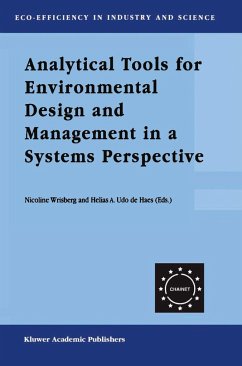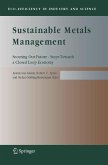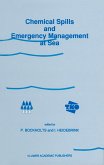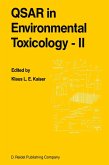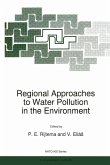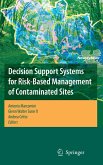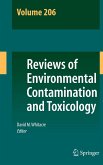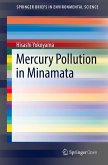WrisbergThe Combined Use of Analytical Tools
Analytical Tools for Environmental Design and Management in a Systems Perspective
The Combined Use of Analytical Tools
Herausgegeben:Wrisberg, Nicoline; Udo de Haes, Helias A.; Triebswetter, Ursula; Eder, Peter; Clift, R.
WrisbergThe Combined Use of Analytical Tools
Analytical Tools for Environmental Design and Management in a Systems Perspective
The Combined Use of Analytical Tools
Herausgegeben:Wrisberg, Nicoline; Udo de Haes, Helias A.; Triebswetter, Ursula; Eder, Peter; Clift, R.
- Gebundenes Buch
- Merkliste
- Auf die Merkliste
- Bewerten Bewerten
- Teilen
- Produkt teilen
- Produkterinnerung
- Produkterinnerung
The aim of this book is to link demand and supply of environmental information in the field of Life Cycle Management. The book is based on the results of the CHAINET concerted action financed by EU-DGXII for the work period 1998-2000, and is intended to build bridges between the different scientific communities in the field of Life Cycle Management. A structured approach is followed, meaning that both demand and supply of environmental information are characterised, after which the two are linked.
Andere Kunden interessierten sich auch für
![Sustainable Metals Management Sustainable Metals Management]() Arnim von Gleich / Robert U. Ayres / Stefan Gößling-Reisemann (eds.)Sustainable Metals Management252,99 €
Arnim von Gleich / Robert U. Ayres / Stefan Gößling-Reisemann (eds.)Sustainable Metals Management252,99 €![Chemical Spills and Emergency Management at Sea Chemical Spills and Emergency Management at Sea]() P. Bockholts / I. Heidebrink (Hgg.)Chemical Spills and Emergency Management at Sea113,99 €
P. Bockholts / I. Heidebrink (Hgg.)Chemical Spills and Emergency Management at Sea113,99 €![Qsar in Environmental Toxicology - II Qsar in Environmental Toxicology - II]() K.L. Kaiser (Hrsg.)Qsar in Environmental Toxicology - II159,99 €
K.L. Kaiser (Hrsg.)Qsar in Environmental Toxicology - II159,99 €![Regional Approaches to Water Pollution in the Environment Regional Approaches to Water Pollution in the Environment]() P.E. Rijtema (ed.) / V. EliásRegional Approaches to Water Pollution in the Environment159,99 €
P.E. Rijtema (ed.) / V. EliásRegional Approaches to Water Pollution in the Environment159,99 €![Decision Support Systems for Risk-Based Management of Contaminated Sites Decision Support Systems for Risk-Based Management of Contaminated Sites]() Antonio Marcomini / Glenn Walter Suter II / Andrea Critto (eds.)Decision Support Systems for Risk-Based Management of Contaminated Sites81,99 €
Antonio Marcomini / Glenn Walter Suter II / Andrea Critto (eds.)Decision Support Systems for Risk-Based Management of Contaminated Sites81,99 €![Reviews of Environmental Contamination and Toxicology Volume 206 Reviews of Environmental Contamination and Toxicology Volume 206]() Reviews of Environmental Contamination and Toxicology Volume 206121,99 €
Reviews of Environmental Contamination and Toxicology Volume 206121,99 €![Mercury Pollution in Minamata Mercury Pollution in Minamata]() Hisashi YokoyamaMercury Pollution in Minamata17,99 €
Hisashi YokoyamaMercury Pollution in Minamata17,99 €-
-
-
The aim of this book is to link demand and supply of environmental information in the field of Life Cycle Management. The book is based on the results of the CHAINET concerted action financed by EU-DGXII for the work period 1998-2000, and is intended to build bridges between the different scientific communities in the field of Life Cycle Management. A structured approach is followed, meaning that both demand and supply of environmental information are characterised, after which the two are linked.
Hinweis: Dieser Artikel kann nur an eine deutsche Lieferadresse ausgeliefert werden.
Hinweis: Dieser Artikel kann nur an eine deutsche Lieferadresse ausgeliefert werden.
Produktdetails
- Produktdetails
- Eco-Efficiency in Industry and Science 10
- Verlag: Springer / Springer Netherlands
- Artikelnr. des Verlages: 978-1-4020-0453-7
- 2002 edition
- Seitenzahl: 275
- Erscheinungstermin: 31. Mai 2002
- Englisch
- Abmessung: 251mm x 161mm x 18mm
- Gewicht: 590g
- ISBN-13: 9781402004537
- ISBN-10: 1402004532
- Artikelnr.: 21379535
- Herstellerkennzeichnung
- Libri GmbH
- Europaallee 1
- 36244 Bad Hersfeld
- gpsr@libri.de
- Eco-Efficiency in Industry and Science 10
- Verlag: Springer / Springer Netherlands
- Artikelnr. des Verlages: 978-1-4020-0453-7
- 2002 edition
- Seitenzahl: 275
- Erscheinungstermin: 31. Mai 2002
- Englisch
- Abmessung: 251mm x 161mm x 18mm
- Gewicht: 590g
- ISBN-13: 9781402004537
- ISBN-10: 1402004532
- Artikelnr.: 21379535
- Herstellerkennzeichnung
- Libri GmbH
- Europaallee 1
- 36244 Bad Hersfeld
- gpsr@libri.de
I: Demand and supply of environmental information.- 1. Introduction.- 2. Demands for environmental information.- 3. Supply of environmental information for decision support.- 4. Analytical tools.- 5. Linking supply and demand concerning environmental information.- 6. Concluding remarks.- Al Aims of the electronic consumer goods case study.- A2 Description of the subject: electronic consumer goods.- A3 Demand side.- A4 Supply side.- A5 Linking demand and supply.- A6 Recommendations.- References.- Bl Aims of the automobile case study.- B2 Description of the subject: the automobile sector.- B3 Demand side.- B4 Supply side.- B5 Linking demand and supply.- B6 Recommendations.- B7 Additional information.- References.- CI Aims of the domestic clothes washing case study.- C2 Description of the subject: provision of clean garments.- C3 Demand side.- C4 Supply side.- C5 Linking demand and supply.- C6 Recommendations.- References.- Dl Life Cycle Assessment (LCA).- D2 Material Input Per unit of Service (MIPS).- D3 Environmental Risk Assessment (ERA).- D4 Material Flow Accounting (MFA).- D5 Cumulative Energy Requirement Analysis (CERA).- D6 Environmental Input-Output Analysis (env. IOA).- D7 Analytical tools for eco-design (matrices and checklists).- D8 Life Cycle Costing (LCC).- D9 Total Cost Accounting (TCA).- D10 Cost-Benefit Analysis (CBA).- Dll Cost-effectiveness analysis (CEA).- D12 Multi-Criteria Analysis (MCA).- El Introduction.- E2 Response.- E3 Characteristics of the overall response population.- E4 Preferences of the overall response population.- E5 Relationships between type of decision situation (question type) and preferences for certain tool characteristics.- E6 Relationship between occupational position and question type.- E7 Relationship between occupational position and preferences for certain tool characteristics.- E8 Some more findings.
I: Demand and supply of environmental information.- 1. Introduction.- 2. Demands for environmental information.- 3. Supply of environmental information for decision support.- 4. Analytical tools.- 5. Linking supply and demand concerning environmental information.- 6. Concluding remarks.- Al Aims of the electronic consumer goods case study.- A2 Description of the subject: electronic consumer goods.- A3 Demand side.- A4 Supply side.- A5 Linking demand and supply.- A6 Recommendations.- References.- Bl Aims of the automobile case study.- B2 Description of the subject: the automobile sector.- B3 Demand side.- B4 Supply side.- B5 Linking demand and supply.- B6 Recommendations.- B7 Additional information.- References.- CI Aims of the domestic clothes washing case study.- C2 Description of the subject: provision of clean garments.- C3 Demand side.- C4 Supply side.- C5 Linking demand and supply.- C6 Recommendations.- References.- Dl Life Cycle Assessment (LCA).- D2 Material Input Per unit of Service (MIPS).- D3 Environmental Risk Assessment (ERA).- D4 Material Flow Accounting (MFA).- D5 Cumulative Energy Requirement Analysis (CERA).- D6 Environmental Input-Output Analysis (env. IOA).- D7 Analytical tools for eco-design (matrices and checklists).- D8 Life Cycle Costing (LCC).- D9 Total Cost Accounting (TCA).- D10 Cost-Benefit Analysis (CBA).- Dll Cost-effectiveness analysis (CEA).- D12 Multi-Criteria Analysis (MCA).- El Introduction.- E2 Response.- E3 Characteristics of the overall response population.- E4 Preferences of the overall response population.- E5 Relationships between type of decision situation (question type) and preferences for certain tool characteristics.- E6 Relationship between occupational position and question type.- E7 Relationship between occupational position and preferences for certain tool characteristics.- E8 Some more findings.

